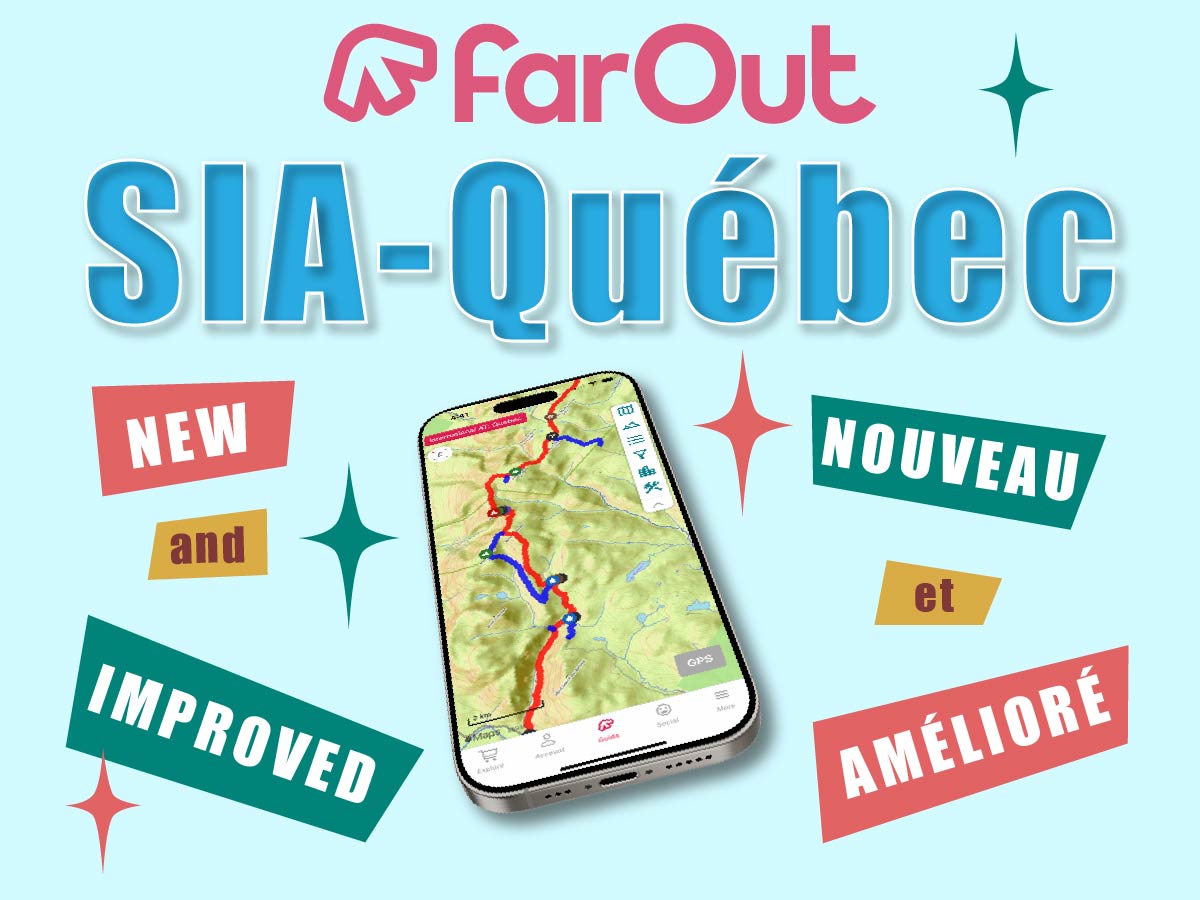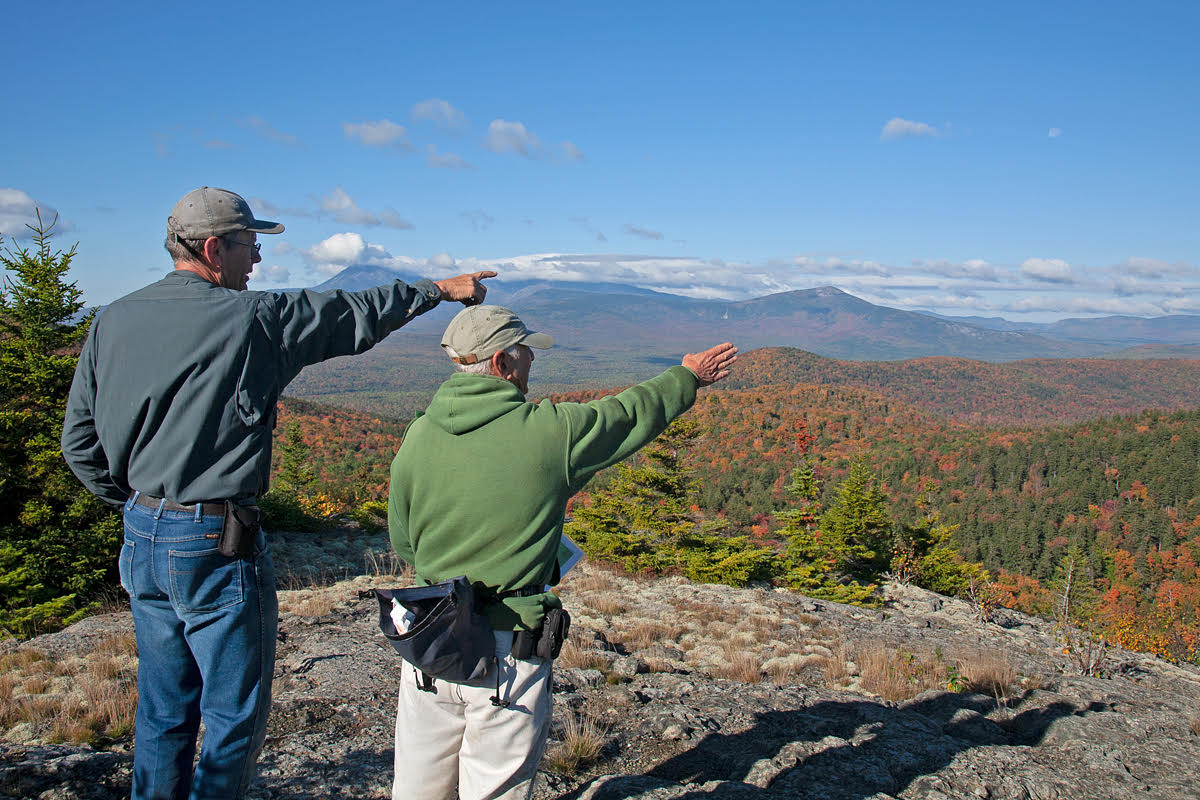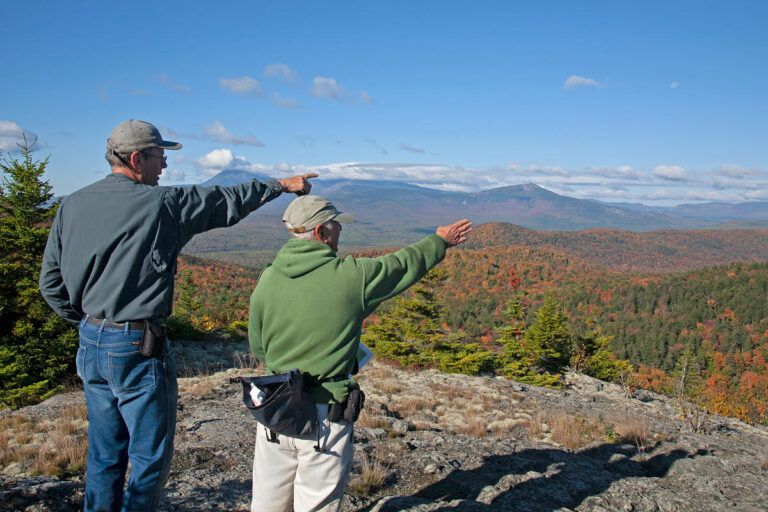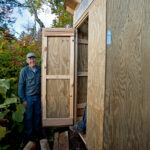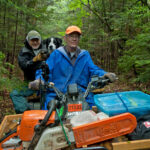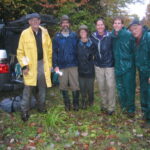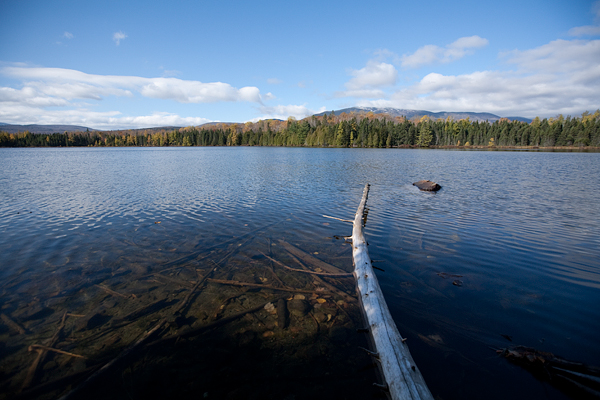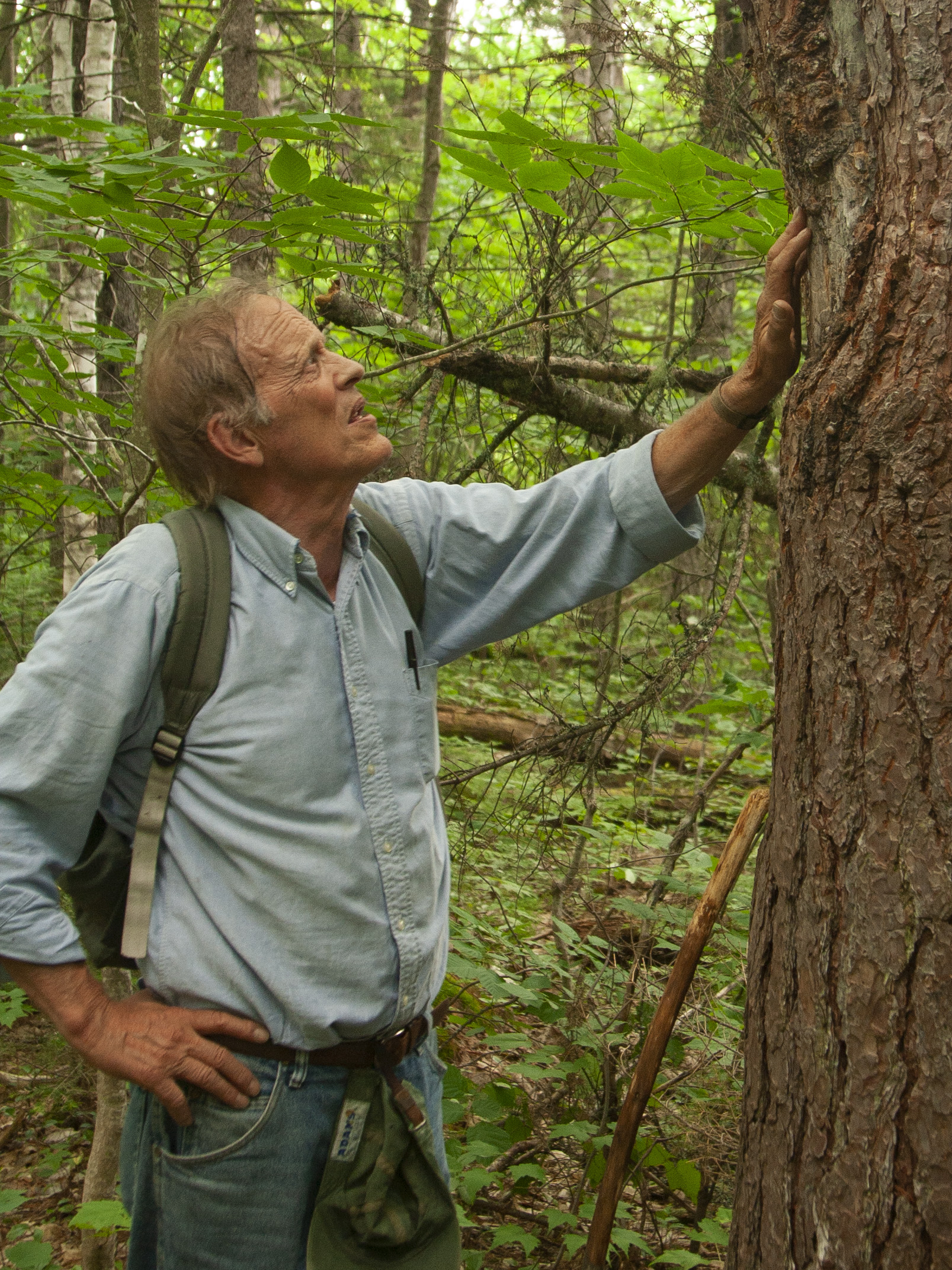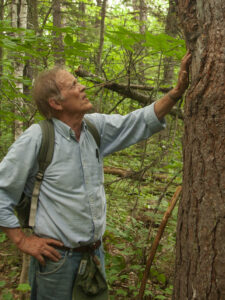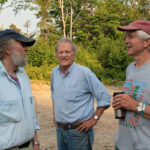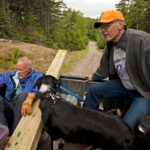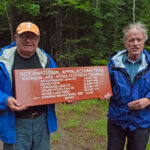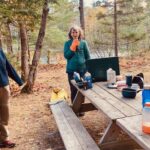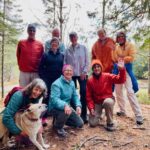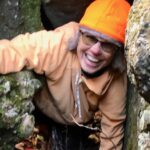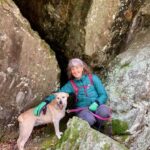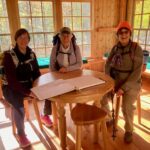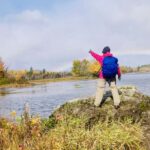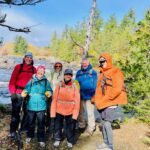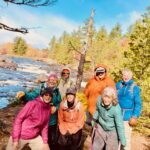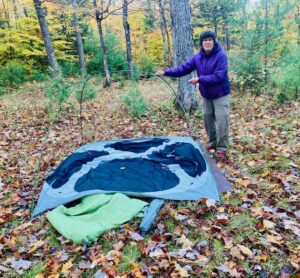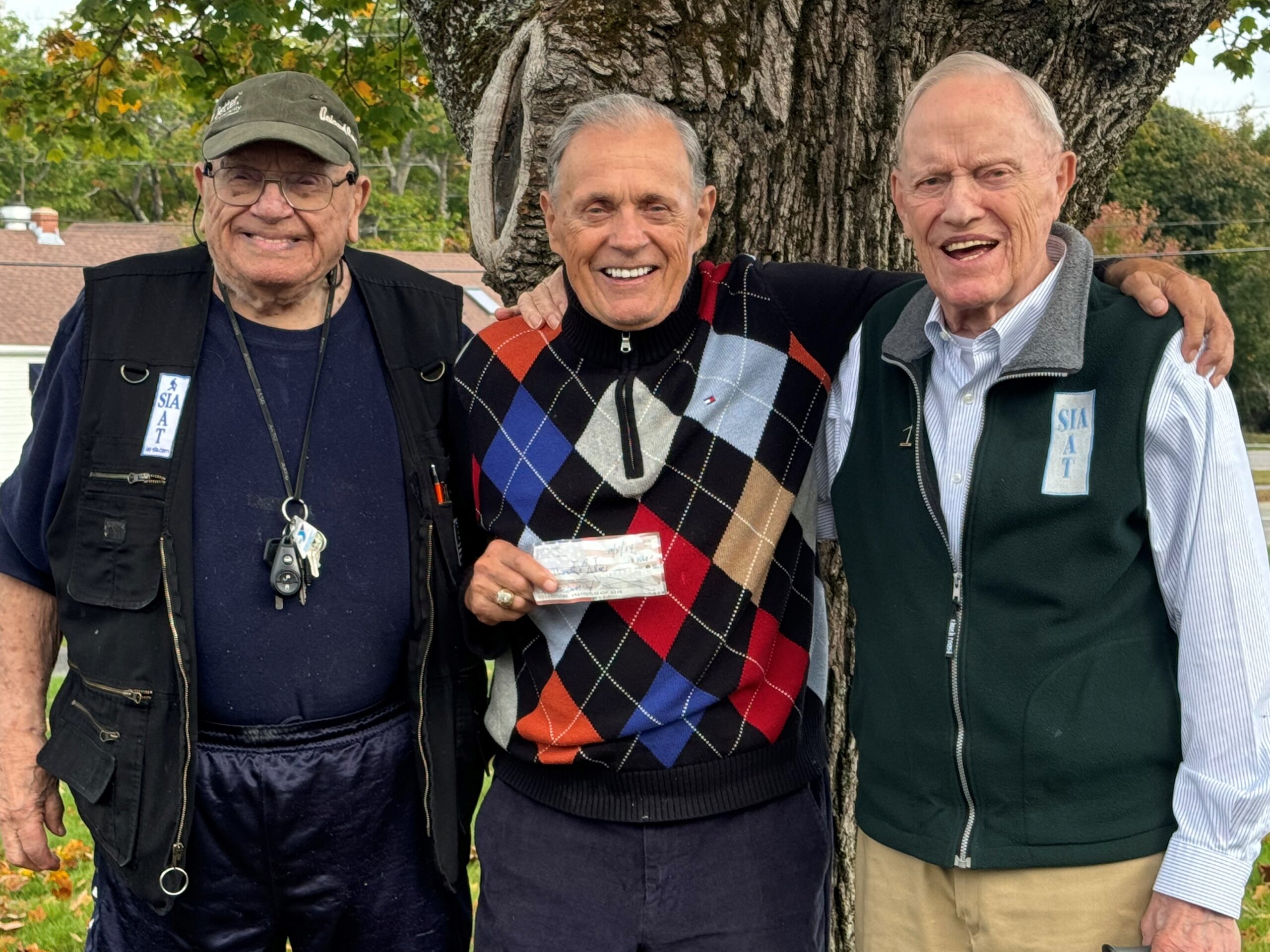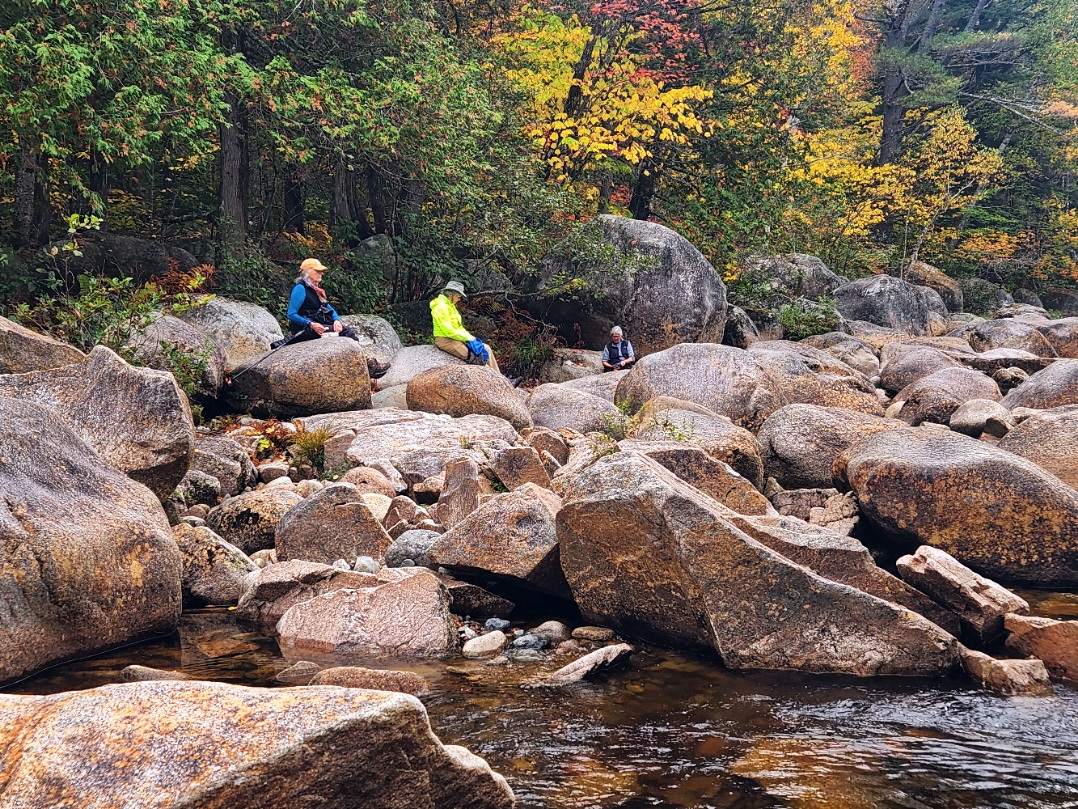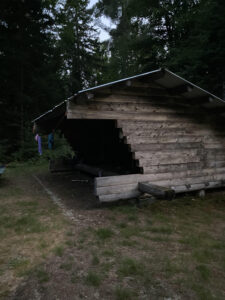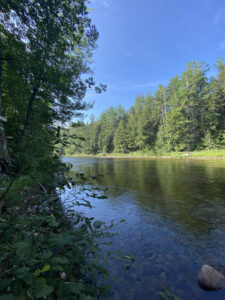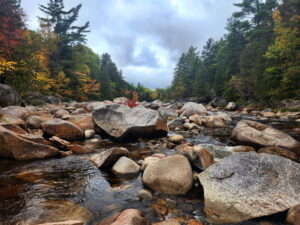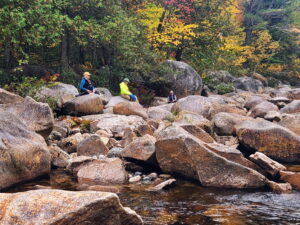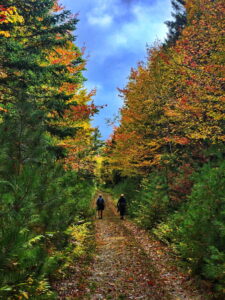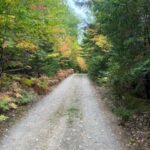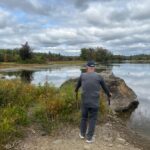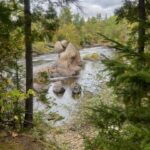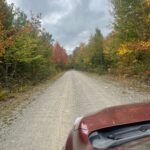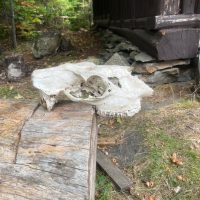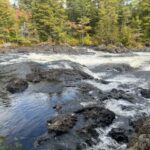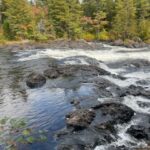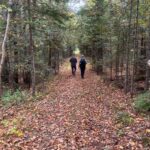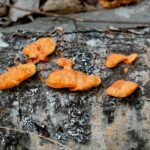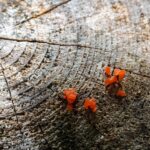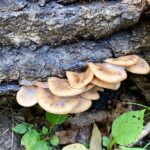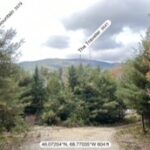Thursday, June 5, 2025
Bill Duffy, Sophie Leigh (our history intern this summer), Don Hudson, Julia Daly, and Jas Smith all met up at the Lunksoos Lodge in the late afternoon/evening. There wasn’t a shared meal that night, so dinners ranged from meals people brought to snack bars and peanuts. The mantles were causing problems, but solar lights turned on at 9:30 pm and didn’t shut off until 2 am, which was a problem for people sleeping. We ended up using headlamps and unplugging the solar lights as the trip went on. Sophie set up shop in the lodge on a mattress in the back room, Don slept on the porch, Julia and Bill both slept in their cars, and Jas slept in the Deasey cabin all by himself.
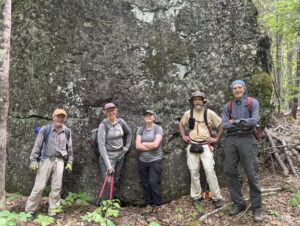
Friday, June 6, 2025
The day started off bright and early with granola and yogurt for breakfast, the preparation of lunches, and an hour-long drive down to the trailhead where the IAT fords the Wassataquoik Stream. Smoke from the recent wildfires in Manitoba was visible in the sky, obscuring any views of Katahdin, though it wasn’t too noticeable at ground level. There was a bit of sun throughout the day.
We met up with Amy and Dylan from the National Park Service, signed the appropriate paperwork, grabbed gear, and hit the trail. Dylan, an NPS archaeologist, was tasked with collecting data on the area surrounding the trail in hopes of identifying potential archeological sites, as well as documenting severe blow downs and new tags that were added to the trail. Amy was responsible for making sure we didn’t do anything we weren’t supposed to do. We successfully forded the stream and headed north up the trail toward Deasey Mountain.
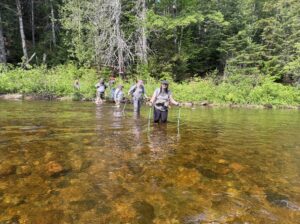
The trail was in relatively good condition, with few major blow downs that we couldn’t clear with loppers, hand saws, and determination. Several new blazes were put up, and a handful of existing blazes were re-affixed or replaced. In some particularly dense areas, or areas where the trail had been recently re-routed, tags were added to clarify the route. The black flies were relentless, but we pushed on and made it all the way up to the Nose of Deasey for lunch. Sophie, Bill, Julia, and Jas hiked onward the little ways up to the Fire Warden’s Cabin, which remains in poor condition. Around 2 o’clock, everyone began the hike back down the trail toward the Wassataquoik.
After an 11-mile day on the IAT, we headed back to Lunksoos Lodge where we met up with Nancy Hathaway, who had just returned from California after a grueling 20-hour travel day (thank you for your dedication, Nancy!). Sophie went for a swim, and we all enjoyed spaghetti with a choice of pesto or marinara sauce with beef and Italian sausage (or both) to close out a hard but fulfilling day. Nancy camped out on the couch in the lodge.
Saturday, June 7, 2025
The day began again with granola and yogurt, the preparation of lunches, and the hour-long drive down to the trailhead. Nancy decided not to join us on our trail work excursion and instead hung back at the lodge and assigned herself dinner duty. Amy and Dylan also did not join us for this second day, as was planned. Though there was some rain expected in the forecast, everyone stayed mostly dry.
We forded the stream and hiked directly to the Fire Warden’s Cabin, as little work needed to be done between the stream and the cabin thanks to the efforts of the day before. Any remaining work was planned for the return trip, as the goal was to potentially reach the summit of Lunksoos. After hiking the steep section up to the summit of Deasey, we had lunch while being attacked by black flies which were somehow worse than the day before. The Lookout Tower was in excellent condition, and Bill gave a quick lesson on how the wardens would have used their maps to triangulate where fires were. We decided not to continue further and instead headed back down towards the Wassataquoik, doing the little work that was needed as we made our way back.
Everyone returned to the lodge by around 5:30 to find a beautifully set table with snacks and sides for the fajitas, which Nancy quickly got to heating up. It was delicious and well-deserved after a 13-mile day on the IAT.
![The dinner table we returned to after a long day. Again, thank you, Nancy!] The dinner table we returned to after a long day. Again, thank you, Nancy!]](https://www.maineiat.org/wp-content/uploads/elementor/thumbs/Photo-7-scaled-r7jklrevjwmdd1txwidaf2q62jdkzk7jiytzng97f4.jpg)
Sunday, June 8, 2025
Breakfast was a bit fancier on the last day, with egg and sausage sandwiches for those that wanted them. Everyone helped with cleaning up the lodge and packing up cars, then headed out on their own time. Thank you to everyone who came for making this trip so successful. Also, shout out to Sophie for lowering the average age by 10 years!

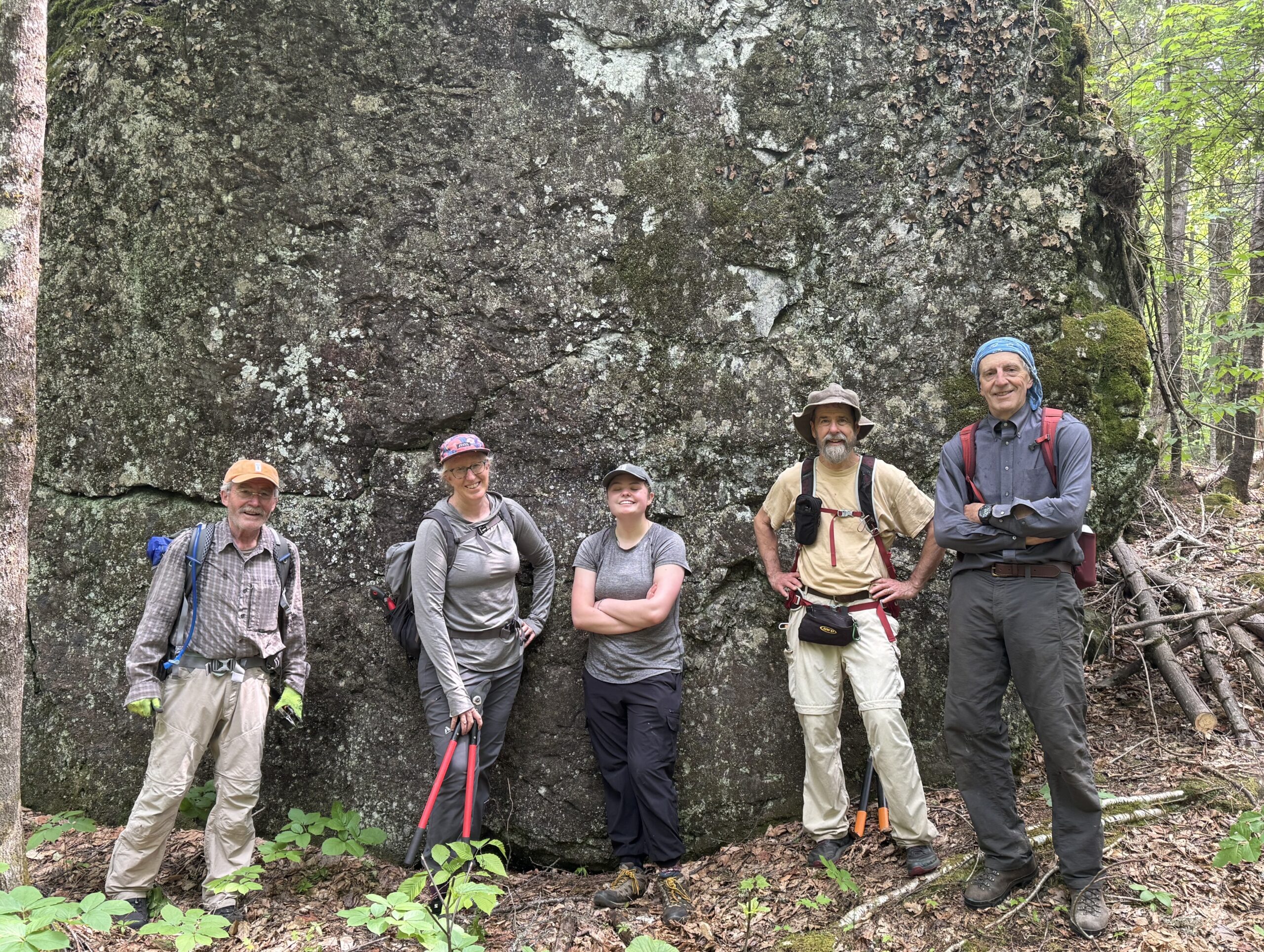
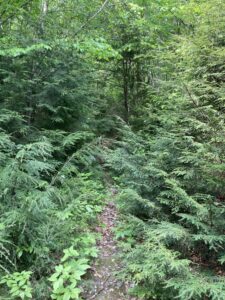
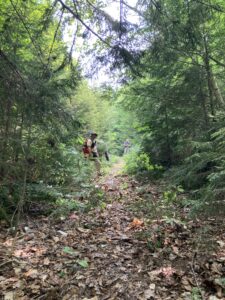
![Jas, Sophie, Bill, and Julia learning about how the map would have been used to locate fires (thank you, Bill, for the lesson!)]](https://www.maineiat.org/wp-content/uploads/2025/06/Photo-6-150x150.jpg)
![Jas, Sophie, Bill, and Julia learning about how the map would have been used to locate fires (thank you, Bill, for the lesson!)]](https://www.maineiat.org/wp-content/uploads/2025/06/Photo-5-1-150x150.jpg)
